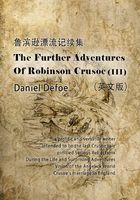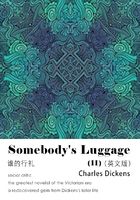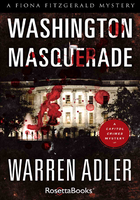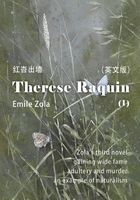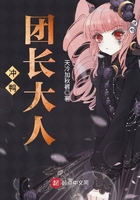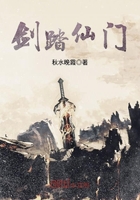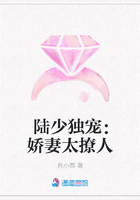BY AMY HERZOG
Hello! My name is Amy. I am an avid knitter, and I have no stash.
The casual observer in my home might argue with that statement. It's true, there's certainly some yarn here. But the yarn in my house is not a stash.
Any knitter can tell you that "having a stash" isn't simply another way of saying you "own some yarn." There are as many reasons to stash as there are stashers, but every stasher does have a reason. They've chosen each hank of yarn in their stash for a particular purpose, and stashes are uniquely personal as a result.
Knitters' stashes are both a story they tell themselves about their knitting and the means with which to live out that story.
The yarn in my house is different. It fills a generous handful of little cube bins in my studio. It's a hodgepodge: remnants from past projects, sample hanks for future projects, and my next six to nine months of design work. All of that yarn is lovely. Much of it is carefully chosen. But none of it is my stash.
I know this because I was once as avid a stasher as I am a knitter.
I picked up knitting for the second time as a young adult after several obnoxious teenage years in which I felt I was "too cool" for the fiber arts. My reacquaintance with knitting was uniquely tied to that time in my life: I wanted to connect to a core part of my mother's life after she passed away when I was twenty-one. Knitting helped me sit quietly next to my new spouse as we watched a movie or TV in the evenings; it also channeled my intense desire to make things and be creative, which wasn't getting much of an outlet in my day job.
I became a stasher almost immediately. My stash was a crisp and focused plan, reflected in the name of my first knitting blog: stash, knit, repeat. The story my small, tidy stash told (along with its spreadsheet) was a step-by-careful-step crafting plan. I knit through the stash and replenished it regularly. Obsessing over, fondling, and working through that teeny stash gave me so much joy.
After a few years, my life changed and my relationship with my stash did, too. I had my first child and moved across the country to follow a professorship for my husband, which gave me the chance to stop working for a time. I packed up that tidy little stash into a single box and moved it with me. The story my stash started to tell was a calming one, the familiar hanks soothing me through the changes and uncertainty of that time.
Then, when I lost five family members over a brutal eight months, my stash's story changed again: It became an ongoing attempt to find beauty still left in the world, a solemn promise to be part of that beauty even when I was feeling most bereft. This change in my stash's story started slowly. When my aunt passed unexpectedly, I found a new hand-dyed lace-weight, drank in its saturated color, smelled the crisp tang of the silk, and then transformed it into a complex shawl that became more than the sum of its parts.
Then when Lois, the grandmother who was also my crafting mentor, died, I made a furious and intense commitment to knit as much as I possibly could, as quickly as I possibly could. This rich, intense hank would be lacy socks I could wear on cold winter mornings. That plump, smooth wool would transform into an adorable toddler sweater for a dear friend's little one. I'd make hanks of ultrasoft cotton into warm caps for my remaining grandmother to wear in the fall. I tried, through my stash, to capture both my own creative urge and Lois's.
When both of my grandfathers followed my aunt and my grandmother, the story of my stash got more frantic, as I tried to reconnect to the past I was losing. I scrambled to find the earthy goodness of a rustic wool. Smelling it transported me back to a cold snowy afternoon, with tiny crusty icicles melting into a comfortable smell by my grandfather's woodstove. I don't remember how old I was, but the raised stone hearth was the perfect size to sit on, basking in the warmth of the air and the stones. I was consumed by the search for the perfect colors to re-create an old stranded sweater, keeping me warm as I scrambled over granite ledges and crunched leaves while trailing after my other grandfather, walking around his land.
By the time I lost a baby in my second trimester, life felt out of control. The purchase of a soft, fine wool was a dual-edged sword, reminding me of other tiny beings in my family who hadn't survived…and yet also declaring my hope that another child would be born. I buried my losses in my first trip to Rhinebeck, barely noticing anything as I shoveled hank after hank into my bag.
My stash exploded during those eight months, quickly filling bin after bin, shelf after shelf.
I desperately needed the stories I told myself with that stash. I desperately needed the healing it gave me, and I don't judge myself harshly for that tumultuous time. But as the brutality faded and life settled down, I started to notice the rather large amount of yarn that now surrounded me. It became clear that in my heart of hearts, this giant stash wasn't telling the right story for me.
Once it lost the deep emotional connection to the grieving process, much of the yarn I'd purchased just didn't look as enticing as it had. The story of that grief-stricken stash changed. I was left with a story of suffocating obligation, and past pain, and old responsibilities.
The financial needs of having two preschoolers gave me the push I needed to address the mental weight of that accumulated yarn: My yarn budget became a shadow of its former self, and I started knitting through my stash. I made some purchases, of course-at a festival or from a dyer introduced to me by a friend. I knit things up quickly, and my stash kept shrinking.
Eventually, there was hardly anything left.
It felt so amazing.
In a life otherwise filled with appointments and routines and responsibilities, my diminishing and eventually nonexistent stash gave me mental permission to break out of plans and constraints and indulge in whimsy instead-to change my mind a billion times with no consequence except the joy of being able to change my mind a billion times.
Without a stash, my yarn purchasing became immediate, the hanks transforming into pieces reflecting who I was at that particular instant. I quickly worked a smooth wool-silk blend into a sleek spring cardigan to match that great skirt I'd just purchased. One fall, we discovered a new hiking trail; I found a nubby, rustic woolen-spun and whipped it up into a cabled pullover I could wear on the trail with my family. The next summer, I was headed to the ocean for a weekend, but nights are cold up in Maine, so I dashed to the store for my favorite hemp blend and pulled together a beachy sweatshirt.
When I was in a place where my knitting urges focused on others, my stashless projects told that story, too. My eldest came home from kindergarten one day begging for knee socks. We hit the local fiber festival to find sock yarn that screamed "Jacob," and he proudly slipped them on the second they were off my needles. I have a fantastic picture of his giant, silly grin as he posed on one leg for the camera. My always-chilly husband shaves his head, and a quick drop in temperatures one cold November Saturday sent me running for a hank of his favorite cashmere blend. I'd finished a little indoor cap by the end of the night, much to his delight.
And on, and on, and on.
In my years without a stash, I've discovered something beautiful. When I got rid of the yarn that bound me to previous versions of myself, my projects were finally able to tell the story I spent years trying (and failing) to articulate with my stash.
It turns out that the most important parts of my fiber life were never about the stash. The bits of my family, myself, and my friends that I tried to work into yarn purchases got tangled up in history and baggage and stale expectations instead. Their stories fell flat. These bits of me and my loved ones couldn't be blended into hanks of yarn on a shelf. They needed to be blended into my creations instead.
The story those creations tell is so much more satisfying than anything my stash ever said to me. Now everything I create is rooted entirely in where I am at that particular time-some items reflect on what has come before, some zing crazily to the side, some are lavish and some sturdily simple. The things I've made since I stopped stashing make an authentic, beautiful story of the women I've been, the people I've loved, and the life I've led.
I know what a stash can do for a person. I deeply, respectfully understand it. But I'm vastly happier without one.
The careful reader will probably remember that I admitted to having a decently large chunk of yarn in my house. And it's fair to ask: If that yarn isn't a stash, what on earth is it?
The truth is, it's just yarn. My knitting story got a bit more complicated about five years ago, when I started designing professionally. The yarn in my house got a bit more complicated, too.
At first, the switch to designing resulted in a huge influx of yarn. My first book had twenty-one adult-size sweaters in it, and let me tell you: The week all that yarn showed up was a pretty daunting one. My work for magazines-more yarn. My own pattern line-more yarn.
Things really got out of hand when I realized that I had even more control over the yarn-design marriage than I'd originally thought. Wait a minute: I can speak directly with a yarn company about what a particular idea wants, and then the exact yarn I need for this exact idea shows up at my house, made just for me?! The perfect result of a creative collaboration? YES PLEASE!
The yarn was back. Briefly.
That heady influx of yarn slowed down and got used up pretty quickly. Yarns tend to turn over rapidly, with something getting discontinued pretty much every season. And nobody wants a new pattern to call for a yarn that's already been discontinued. I was soon back to acquiring yarn and knitting it up almost immediately.
I do tend to keep more yarn around the house than I did before I started designing, because at this point in my career, I plan my design schedule out about a year. In the interest of helping you understand why I still consider myself a stashless knitter, here's a brief tour of what's in those bins:
· The smallest amount of yarn is detritus from past projects. I try to acquire generous enough yardage that I have a lot of design flexibility; that almost always results in a hank or three left over at the end of a project. Those leftovers collect until they outgrow their bin, at which point I donate/review/hold a contest/give the yarn to someone who can do something lovely with it.
· Next in terms of actual quantity is swatching yarn: sample hanks, both full-size and mini, for swatching and planning out the next set of projects and collaborations.
· Finally, there are the sweater quantities. They represent a small(ish) number of projects, a giant amount of yardage, and somewhere between six and twelve months of work. This yarn-between eight and twenty sweaters' worth-comes from businesses I believe in and represents the best our industry has to offer. Much of it is chosen strategically to make a coherent and easily acquired portfolio of garments. A very few sweaters' worth is yarn that caused me to squeal with delight and grab it with greedy hands the second I saw it. (I try to keep creative juices flowing by giving myself an immediate "just because" project every season.)
All told, the yarn in my house probably totals one to two giant plastic bins. It will all be gone within a year. Most of it says very little that's uniquely personal to me. It's stunningly beautiful; but if it all disappeared tomorrow, I'd just shrug and make a new work plan. It's lovely yarn, and I enjoy working with it, but at the end of the day, it's an (especially) inspiring set of work materials. It's not a stash. And I wouldn't have it any other way.
In the nearly twenty years since I picked my knitting needles back up again, in this one tiny little part of my life, I've lost myself in the pure joy of ephemera. I get great pleasure out of the freedom to make my crafty tomorrow whatever I'd like it to be when I get there.
Maybe I'll want to dive into a series of lace wraps, or more knee socks for the boys (who are rapidly becoming young men), or a lap blanket, or a cozy hat, or a sweater like the ones my mother made us when we were kids, or something inspired by that top I've finally worn to death…
…or maybe not. Maybe I'll want to do something I can't even conceive of now.
I'll figure it out when I get there. I don't need to plan for it. I don't want to plan for it. I don't want to shackle tomorrow's creativity to the place I'm in today. There will be yarn that's perfect for whatever is captivating me at the moment. Or not, and I'll move on to something else. It's all good.
My name is Amy. I'm an avid knitter with no stash-and no desire to acquire one. Who would have thought?

